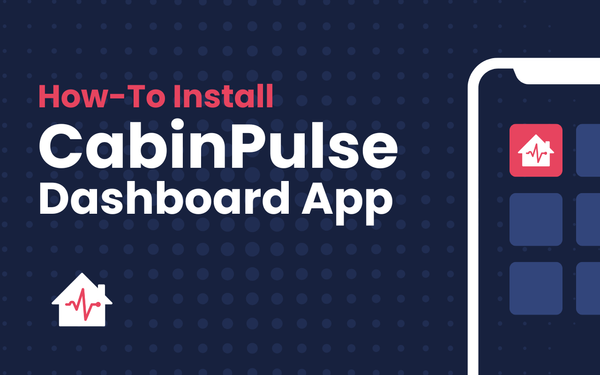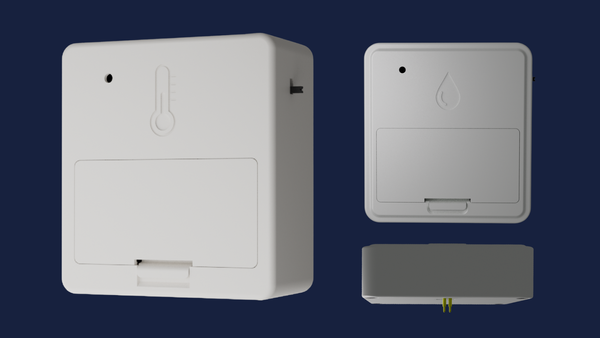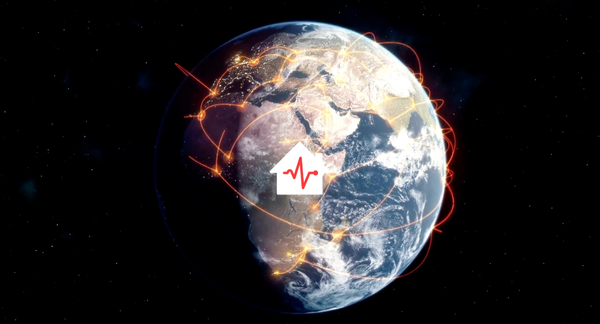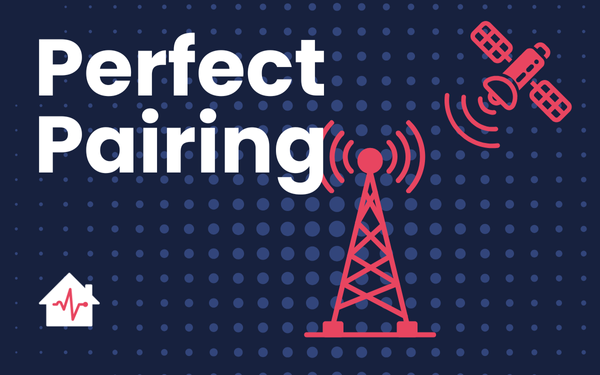Satellite Connected IoT is Coming to Canada - Faster and Cheaper Than We Expected
If you've been following the remote monitoring space, you know that truly off-grid connectivity has always come with a hefty price tag.

If you've been following the remote monitoring space, you know that truly off-grid connectivity has always come with a hefty price tag. Traditional satellite IoT solutions can run hundreds of dollars per month, making them practical only for industrial applications. But a seismic shift is happening in Canadian telecommunications that's about to change everything for IoT devices – and it's happening faster than anyone predicted.
The Satellite Revolution Has Arrived
This week, Rogers became the first Canadian carrier to launch satellite-to-mobile messaging, partnering with SpaceX and Lynk Global to extend coverage to 5.4 million square kilometers – that's 2.5 times more area than any other Canadian carrier covers. While this initial rollout focuses on consumer smartphones, it signals something much bigger for the IoT industry.
The technology is deceptively simple: low-earth orbit satellites act as cell towers in space, connecting directly to devices on the ground. No special equipment needed – just a clear view of the sky.
But Rogers isn't alone in this race.
Bell Canada has partnered with AST SpaceMobile to develop their own satellite-to-mobile network, with plans to launch service in 2025. This competition is exactly what the market needs to drive innovation and, more importantly, bring prices down.
From Sky-High Prices to Mass Market
Today's satellite IoT solutions are prohibitively expensive for most applications. Industrial satellite transmitters can cost thousands of dollars, with monthly service fees reaching into the hundreds. It's a classic chicken-and-egg problem: high prices limit adoption, and limited adoption keeps prices high.

But we've seen this movie before. Remember when cellular data cost dollars per megabyte? Or when a basic cell phone plan ran $100+ per month? As networks expanded and user bases grew, economies of scale kicked in.
Today, you can get unlimited data for less than what 100MB cost in 2005.
The same transformation is about to hit satellite connectivity. Rogers is offering their satellite messaging service for just $15 CAD/month after the beta period. That's a consumer price point for what was previously enterprise-only technology.
What This Means for IoT
As satellite networks designed for consumer phones roll out, they create infrastructure that IoT devices can piggyback on. The same satellites beaming text messages to smartphones can just as easily relay temperature data from a remote sensor.

The implications are profound:
- Universal Coverage: That 82% of Canada without cellular coverage? Suddenly accessible.
- Simplified Hardware: No need for expensive satellite modems – devices can use standard cellular chips that support satellite connectivity.
- Competitive Pricing: With multiple providers entering the market, we'll see rapid price competition.
- Hybrid Solutions: Devices can seamlessly switch between cellular and satellite, optimizing for cost and coverage.
The IoT Demand Surge
While consumer cellular saw gradual adoption over decades, IoT has pent-up demand ready to explode. Thousands of Canadian businesses and property owners need remote monitoring but have been priced out of satellite solutions.

Consider the use cases waiting in the wings:
- Remote building monitoring in areas beyond cell coverage
- Agricultural sensors in vast prairie fields
- Environmental monitoring in the Arctic
- Pipeline and infrastructure monitoring across the wilderness
- Wildlife tracking and research applications
Each of these represents not just one device, but potentially thousands or millions. This massive addressable market will drive the same economies of scale that made cellular affordable for consumers – but compressed into a much shorter timeframe.
CabinPulse: Ready for the Satellite Era
At CabinPulse, we've been preparing for this shift. While our current devices use cellular networks (working across all Canadian carriers including Bell, Rogers, Telus, and SaskTel), we're already developing CabinPulse+ – a hybrid cellular/satellite device that will automatically switch to satellite when cellular isn't available.
This isn't just about reaching more remote locations. It's about providing peace of mind that your monitoring will work anywhere, anytime. No more checking coverage maps or worrying about dead zones. If you can see the sky, you're connected.
The Timeline is Accelerating
Industry insiders initially predicted affordable satellite IoT wouldn't arrive until 2030. But with Rogers already live, Bell launching soon, and global players like SpaceX's Starlink and Amazon's Kuiper constellation on the horizon for direct-to-cell, we're seeing that timeline compressed dramatically.
We expect to see:
- 2025: Multiple satellite-to-mobile networks operational in Canada
- 2026: First wave of affordable hybrid IoT devices hitting the market
- 2027: Satellite IoT pricing reaching parity with cellular for basic applications
What This Means for You
If you're monitoring a remote property today, this revolution means:
- More Options: No location will be truly "off-grid" anymore
- Better Reliability: Redundant connectivity through both cellular and satellite
- Lower Costs: Competition will drive prices down rapidly
- Simpler Setup: No more external antennas or complex installations
The days of choosing between expensive satellite monitoring or no monitoring at all are numbered. The future of IoT is universal, affordable connectivity – and it's arriving faster than anyone expected.
The next chapter of remote monitoring is about to begin, and we're excited to be part of bringing this technology to Canadians everywhere – literally everywhere.
Interested in learning more about satellite monitoring for your remote property? Check out our guide on satellite power and temperature monitoring or contact us to discuss your specific needs.




